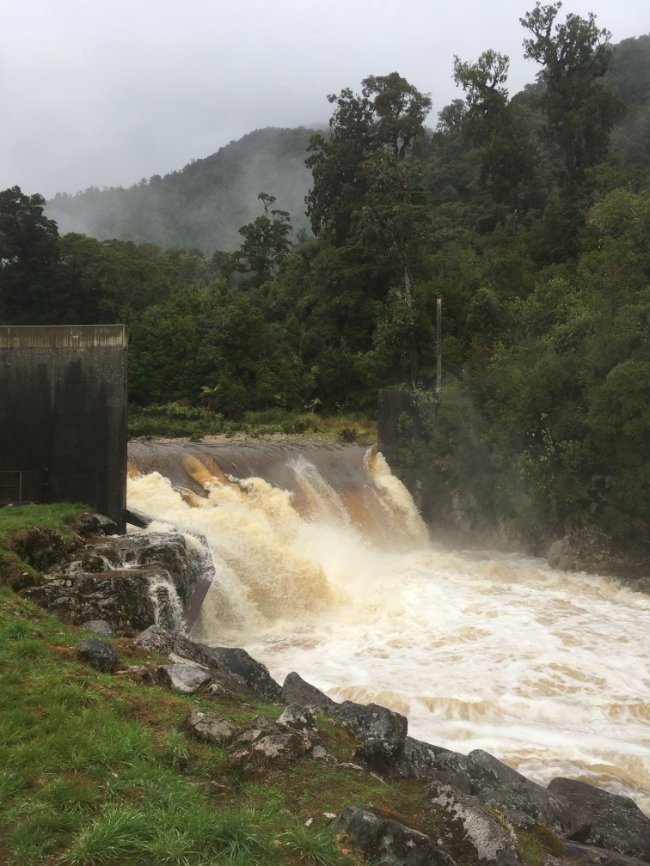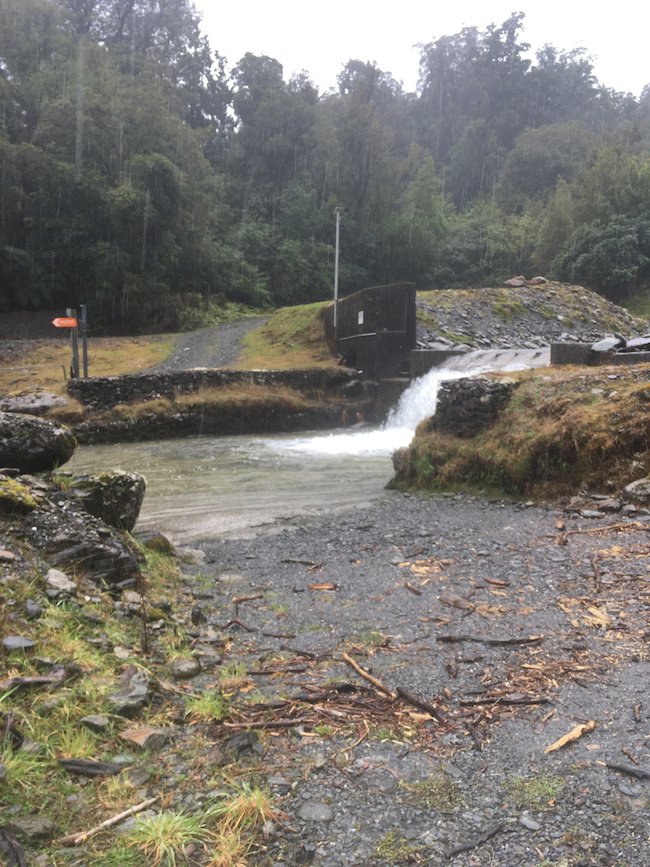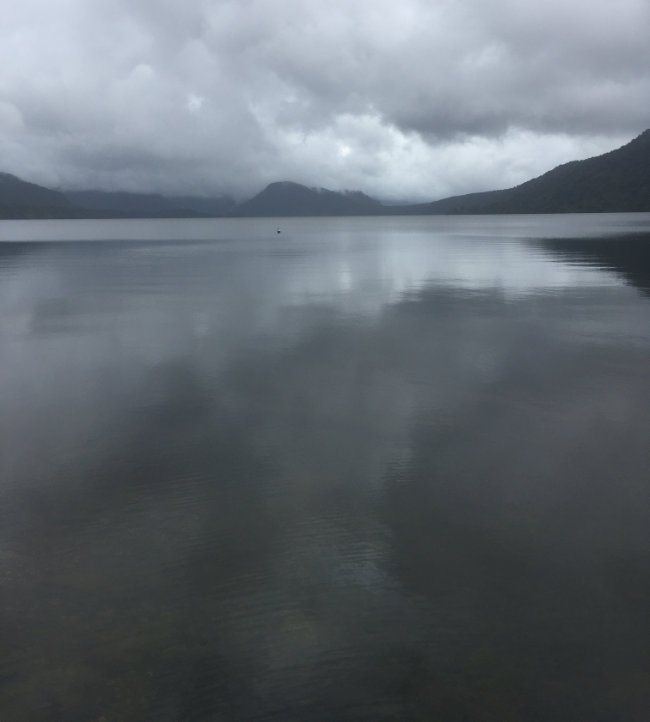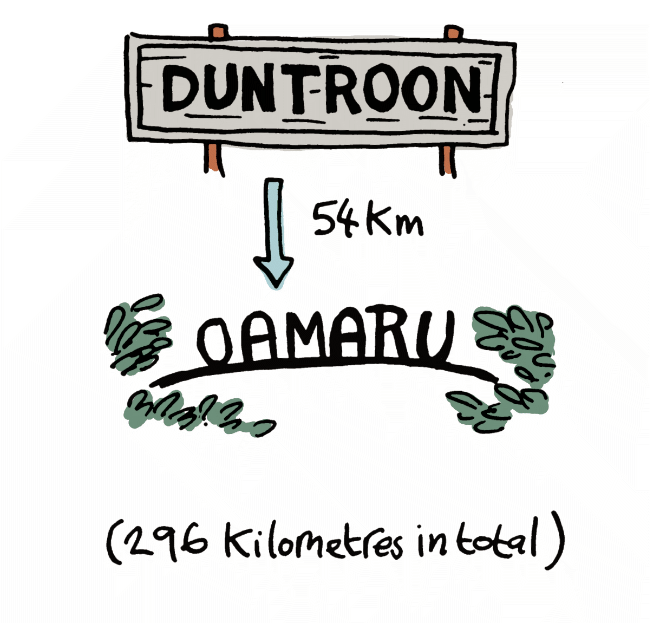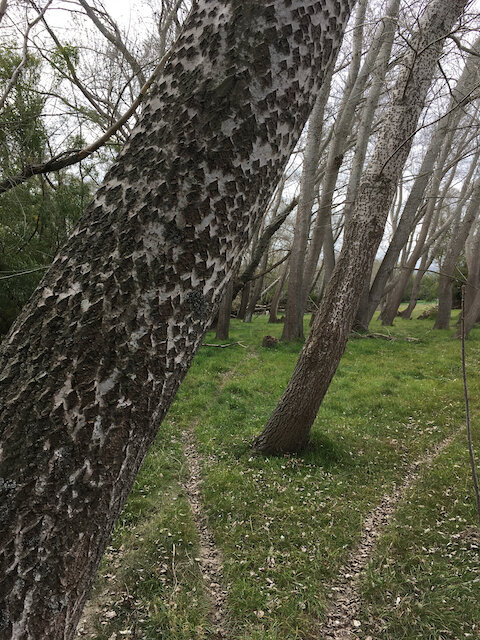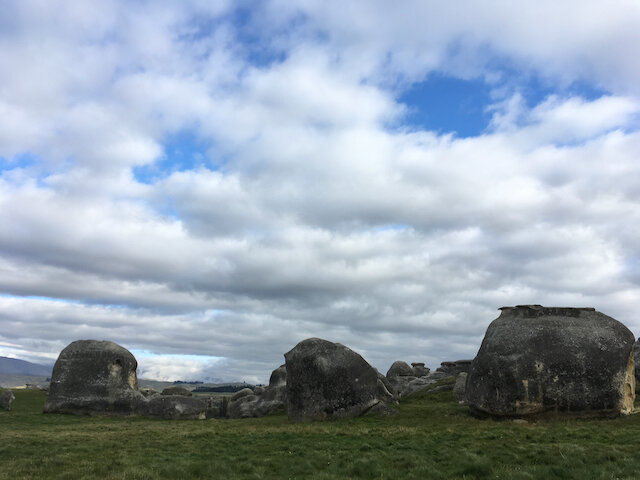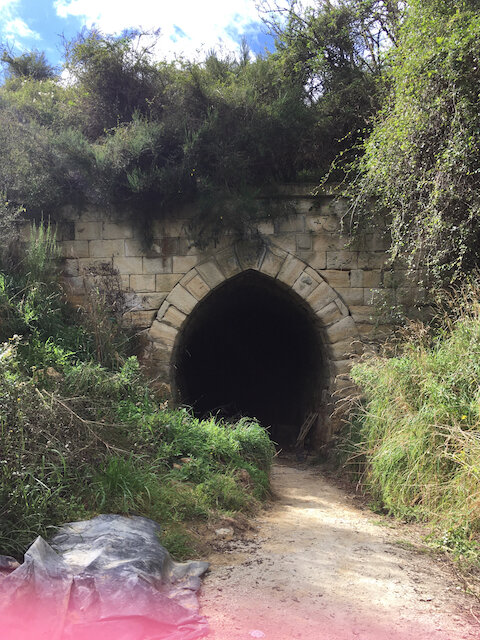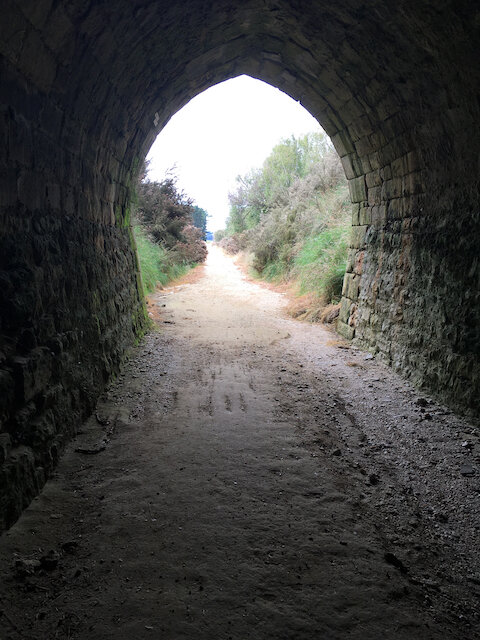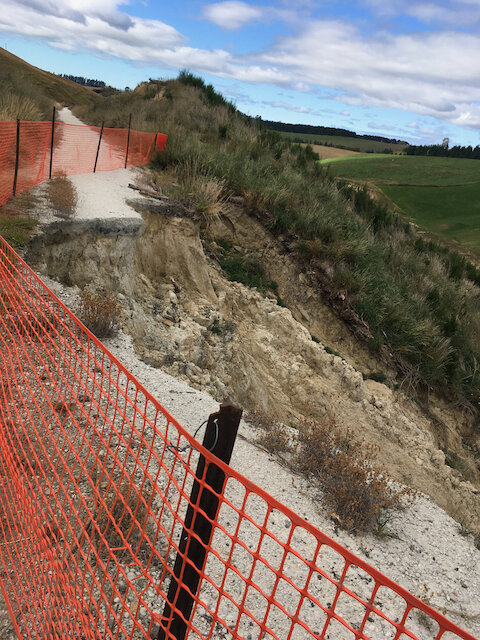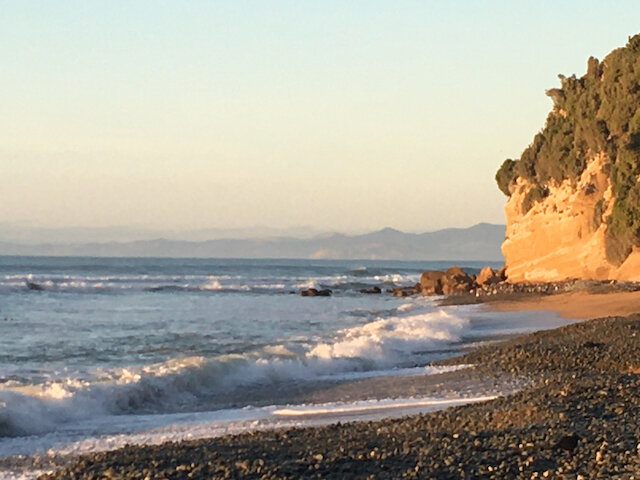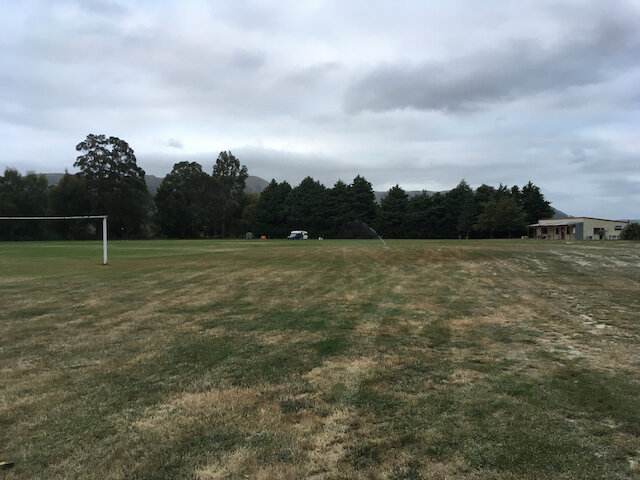New Zealand: West Coast Wilderness Bike Trail from Greymouth to Ross
Dropped off at the start of the West Coast Wilderness Bike Trail at Greymouth
I recently spent four days biking the West Coast Wilderness trail, and, despite the classic West Coast inclement weather, I loved it. Here's a quick rundown of my journey:
Day 1: Greymouth to Kumara
Only really half day of biking to start. It wasn’t too demanding, but I had less energy at the end of the three hours (much of it stopping to read signs or look at stuff) then on the rest of the trail.
Reminders of the importance of coal mining to the west coast are everywhere, including the smell of coal smoke even in summer
Sadly, I didn't see either
I saw a dead bumblebee on the path in front of me as I left Greymouth. It strangely affected me. As I get older I find these things harder to bear.
The death of nature everywhere.
I pressed on, relying on my gut feeling to guide me when the signs disappeared. Trail markings seemed more consistent later in the trip, or maybe I became better at finding them.
The highlight of the day was the wooded section towards Kumara, where you lose the noise of the road and hear only water and bellbirds. Crossing the gorge was a treat. As was the pub at the end. We stayed in the backpackers, which was a bargain at $50 for the double room.
Gorgeous
Day 2: Kumara to Lake Kaniere
Day 2 was a ride of over 50 km, mostly uphill. Despite the rain (my feet were wet within minutes and the rain crept in to the rest of my gear reaching all but my very core), it was my favourite day of the trip. The West Coast rainforest was stunning, with tree ferns, fun fungi, fern-lined avenues, and beautiful water races. A hare crossed my path to begin with and it seemed like a better omen.
I was guided by a shag (cormorant) flying over the lake as I came into the first shelter for a cup of tea and some River Cottage seedy slice.
Excuse photo quality. My phone doesn't do well in the rain.
After my first stop there was a slow incline. Sometimes it seemed like I might be on the level, even going down, but the tea-stained streams and water races beside the track would be running in the opposite direction.
After the boardwalk the trail goes along a well formed track that has been benched to take most water off it. I was never bogged down in mud like on some trails.
Water running high but not too high
There is a high water route for when the weirs run too high to cycle through. I asked some electric bikers going the other way whether the weirs were open and they said they were but that they were too high for them to go through. Perhaps because they have batteries and electrics that would not do well in the mid calf water I found. It was fun to pedal through them on a pushbike.
Not too deep: one of the river crossings on the West Coast wilderness bike trail
I saw crazy conical blue mushrooms that looked like something out of a weird, land-based Avatar movie.
When I finally arrived at Lake Kaniere, I was grateful for the drying room and hot shower at the homestay. The host, Grant, ran a tight ship, with a list of things to do to keep the place comfortable, including removing our muddy gear and keeping everything closed against the West Coast sandflies.
Grant took us on a guided walk around a local nature reserve with many kahikitea and rimu trees interspersed with tree ferns
Day 3: Lake Kaniere to Hokitika
Lake Kaniere
Day 3 started with a refreshing swim in the lake, with only a diving duck (scaup) for company. Along the way, I saw a South Island tomtit perched on a small tree, and we stared at each other for a few moments before it flew away.
The ride through the beautiful forest was easy and then I was going along the Hokitika river and back to civilisation with a jolt. A huge mass of pipes, concrete and steel embodies the talent Fontera has to make money from turning clean water into milk and dirty run off, before using coal to dry it into powder to ship overseas. But it is jobs and money. We need better jobs and more than just money. Clean rivers would be nice.
Day 4: Hokitika to Ross
The final morning of my trip was spent exploring Hokitika, a town that has suffered through the Covid pandemic and is struggling to get back on its feet now that tourists have returned. I was relieved to leave the shiny, happy and sterile campground (which was recently a natural swamp that was drained and filled in with gravel - isn’t it weird that we call areas like this “reclaimed”?) and get back into nature, although it took some time to do so.
I went over the concrete bridge that has been part of the taming of this wild river mouth and coast which used to wreck a ship every 10 days in the 1860s at the height of the Gold Rush. A time when men who often couldn't swim took their chances to get rich quick. That that gold rush mentality endures in New Zealand. Gold gave way to coal and sheep and now cows.
Then I rode past the golf course before taking a welcome turn into more regenerating nature reserve, escaping into dense thickets of new growth forest being greeted by the sound of bellbirds with traffic muffled, but the pounding surf breaking through.
Autumn on the trail is a great time to see lots of mushrooms like this fly agaric
Bellbirds sang me through the tunnel of trees that were near the wetland of Mahinipua reserve which ends at a weird plantation of tall trees,
A stand of eucalyptus trees that seemed to become impossibly tall before dying. Like a scene out of the Dr. Seuss book. They were part of an experimental plantation of exotic trees that never worked out.
Coming off the tramway track I was annoyed at myself to find I missed the turn for the picnic track to the lake — the only way to see it on this trail. A missed opportunity to swim as well. I didn't want to backtrack and add 4 km to the journey. So onward and out on the tarmac for a fairly easy ride for a few kilometres on a wide road with vehicles giving me a decent amount of room. A kea crossed my path as I cycled toward the Totara Lagoon.
It's a long boring slog along the old rail line to Ross. More than a dozen kilometres with nothing but track and flax for most of it. If I did the trail again I would probably stop at Treetops.
There was a brief reprieve in the monotony when flaxes gave way to show the wider expanse of the lagoon and the hills beyond. It didn’t last long before the flaxes closed back in again. When I got to the end of the rail line I should have headed to the finish but instead I turned right and had a welcome swim at Ross beach. If you stay at its very expensive campground you do have the advantage of being right by the beach. But I turned back to rejoin my other half at another pub before we headed on towards home.
The end of the trail for me was the beach at Ross
Overall I enjoyed the trail immensely and recommend it as one of the best off road rides in New Zealand. My favourite sections were those that were in nature. Even if they were in the rain.
Living in New Zealand: Alps2Ocean on an Ordinary Bike: Day 7: Duntroon to Oamaru
It was another overcast day but with clear views over the hills.
Most of the day’s trail goes through farmland and is dominated by introduced species like these beautiful birches.
Elephant rocks near Kurow
You can see how Elephant rocks got their name.
It is worth taking the time to walk among the rocks. They reminded me of the standing stones in Avebury, England.
Water and wind has carved patterns in the limestone.
Echo corner. I stopped and tried it out. It works.
Dairy country. Too many nutrients in the water cause algal blooms which can be toxic so rivers aren’t swimmable.
The dairy and irrigation industries sponsor these signs that are laughable when you look at the state of the waterways you are riding near.
A climb up a gravel road rewards you with the first view of the ocean.
Heavy rains earlier in the year had washed out some of the track.
The official end point
I ended the trip by throwing in the stone I’d brought from Tekapo into Friendly Bay and following it in.
Started at 8:40 am and arrived at 2:30, with about 4 hrs in saddle. One of the more demanding days of the trail, but rewarding (though the only swimmable part is at the end).
Sue came down to meet me and we headed to a local bar with our partners.
Our arrival in Oamaru coincided with their Jazz and Blues Festival. We enjoyed listening (and dancing!) to these guys before we headed back to the backpackers (The band was Oscar LaDell and Hoot)
After a night at the backpackers ($100 for a double room), I went for a wild swim at Bushy Bay, watched only by a couple of seals on the beach.
Then it was off to the Oamaru farmers market (on a Sunday) to stock up before heading back.
We packed up Gertie for the trip home (I’m glad she survived as well as my bike. You can see what Duncan’s parallel fishing trip was like at his blog here: https://localfoodhound.wordpress.com/2021/03/28/mackenzie-country-adventure/).
Living in New Zealand: Alps2Ocean on an Ordinary Bike: Day 6: Kurow to Duntroon
Had a coffee and a cheese scone at Wild Sage Cafe which didn’t open until 10am. It was a good day to start late, as it was a cold overcast damp morning. Then it was a nice easy track along the Waitaki River and through the vineyard.
It was interesting crossing wide dried riverbeds that must be a sight to see in flood like in January. I wonder if they would be dry in autumn if there wasn’t so much water extracted for irrigation.
There were a couple of crossings of dry river beds.
This area of the trail is dominated by limestone escarpments, some of which are decorated with Maori drawings. The rock art site at Takiroa is a good spot for lunch, away from the road and the smell of cow shit and silage.
Heavily irrigated dairy farming is also more evident and the limestone and gravels drain into aquifers and rivers.
Heavily irrigated pasture
At least the local iwi are now working with farmers to riparian plant and improve the water. You can see results with more bird life on the last section. Though most of the banks of the river are still choked with willow.
Good to see planting of natives on the left to prevent run off from the pasture on the right
Rivers all over NZ are being sucked dry
Duntroon wetland is a definite highlight just before the end of the day’s pedalling. Amazing to see it thriving though surrounded by intensive dairying.
Duntroon has a campground with good facilities for only $20 for a tent.
And it’s a short walk to the pub.
Left at 11 am. Arrived at 3 o’clock. Two and a half hours in the saddle.
Living in New Zealand: Alps2Ocean on an Ordinary Bike: Day 5: Otematata to Kurow
When you google what to do in Otematata, you find everything to do with the lake and nothing to do with the town because there is nothing in the town. There’s a small everything store and beside it a place to get tiptop ice cream (unfortunately not even New Zealand owned any more). There is a golf course and playing fields and a pub, but all the activity centres around the lake below the dam. The lake is wonderful, but if I’d known I think I would’ve avoided the 12 km diversion and carried on to Kurow. As it was, I had to cycle the 6km back up to the top of the dam. At least the last 15 minutes of climbing warmed me up. It was the first time I had worn my sealskin gloves and down gilet to start the morning.
Looking towards Benmore Dam
Now the landscape becomes even more about introduced species of flora and fauna. I saw a ferret run in front of me and a dead wallaby by the side of the road. I stopped for tea by the lakeside, which was choked with willows.
I took more time again to take breaks and enjoy my surroundings on the trail rather than rocking up early to the campsite. A 15 minute walk up Deep Stream track takes you to a picnic bench. It was a perfect spot for a skinny-dip and I swam from one side to the other bank and back. It is deep. Once again I was trying to not think about the eels that were probably under me. But I saw nothing but fantails above me and a cormorant that left the rock I swam to.
Deep Stream
I stopped for lunch in the ruined village of Wharekuri. The lady in the Kurow Museum said that the village had been abandoned after fire. It was a sad place to be but that was because there was so many broken beer bottles there.
Kurow’s campground is very cute and ideal for kids. I would’ve loved it as a nine-year-old playing in the safe river and amongst the trees. It was only $65 for a cabin.
We had a basic, but good pub meal and paid a bargain $9.50 for a pint and a half of Speights.
Left at 8:35 and arrived in town at 2:55. Time in saddle: three hours 10 minutes.










